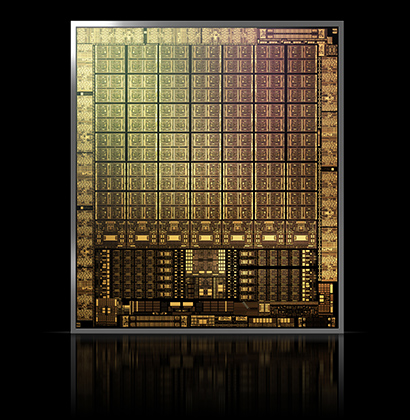GeForce RTX 3060 8GB
NVIDIA GeForce RTX 3060 8GB
The GeForce RTX 3060 8 GB, introduced by NVIDIA on October 25, 2022, is a mid-range graphics card for gaming at Full HD resolution. The GA106-302 graphics chip of the GeForce RTX 3060 8 GB consists of approximately 12 billion transistors, which are accommodated on only 276 mm² thanks to the 8 nm manufacturing process. Ampere includes revised computing units in the form of SMs (Streaming Multiprocessors), 3rd generation Tensor Cores, and 2nd generation Ray Tracing Cores. The throughput of these computing units has almost doubled compared to the Turing architecture. Additional features include DLSS AI acceleration, NVIDIA Reflex, NVIDIA Broadcast, and NVIDIA Omniverse Machinima. This variant of the NVIDIA GeForce RTX 3060 comes with 8 GB of GDDR6 video memory and is ideal for Full HD gaming.
Performance Data of the NVIDIA GeForce RTX 3060 8GB Graphics Card (Reference Model):

- Computing Power (FP32): approx. 12.7 TFLOPS
- CUDA Cores (Shader): 3,584
- RT Cores: 28
- Tensor Cores: 112
- GPU Base Clock: 1,320 MHz
- GPU Boost Clock: 1,770 MHz
- Graphics Memory: 8 GB GDDR6
- Memory Clock: 1,875 MHz (effective 15,000 MHz)
- Memory Interface: 128 Bit
- Memory Bandwidth: 240 GB/s
- TDP: 170 Watts
- Video Outputs: DP 1.4a, HDMI 2.1
Ray Tracing
Ray Tracing combines all these effects to represent the final color of a pixel on the monitor. Until now, ray tracing was mainly used in movies to create special effects. Render farms are often used for these scenes, and calculating complex 3D animations and special effects for movies can take several weeks. Due to the complexity of ray tracing, PC applications like computer games have typically been filled with 3D objects based on a raster model. In rasterization, 3D objects are modeled from a network of triangles or polygons. In the rendering pipeline, these triangles of the 3D model are individually converted into pixels on a 2D surface. Subsequently, the pixels can be further processed ("shaded").
Tensor & DLSS
These matrix-based computing cores are equipped with special data paths for optimized floating-point calculation throughput and offer increased energy efficiency. The "training" and "inference" as parts of deep learning especially benefit from the tensor cores. Training, i.e., learning new skills based on existing data, is intended to be performed with the tensor computing cores at up to 12 times higher TFLOP performance than with Pascal, the predecessor of the Volta GPU architecture. Inference in deep learning is the application of the skills learned during training and is expected to achieve up to 6 times higher peak TFLOP performance with Volta compared to Pascal.
The Current NVIDIA GeForce RTX 30 Graphics Cards Overview:
Do you want to know which NVIDIA graphics card is right for you? The following list includes all current models of the Ampere generation, sorted by performance and starting with the most powerful graphics card.
- NVIDIA GeForce RTX 3090 Ti
- NVIDIA GeForce RTX 3090
- NVIDIA GeForce RTX 3080 Ti
- NVIDIA GeForce RTX 3080 12GB
- NVIDIA GeForce RTX 3080
- NVIDIA GeForce RTX 3070 Ti
- NVIDIA GeForce RTX 3070
- NVIDIA GeForce RTX 3060 Ti GDDR6X
- NVIDIA GeForce RTX 3060 Ti
- NVIDIA GeForce RTX 3060
- NVIDIA GeForce RTX 3060 8 GB
- NVIDIA GeForce RTX 3050

